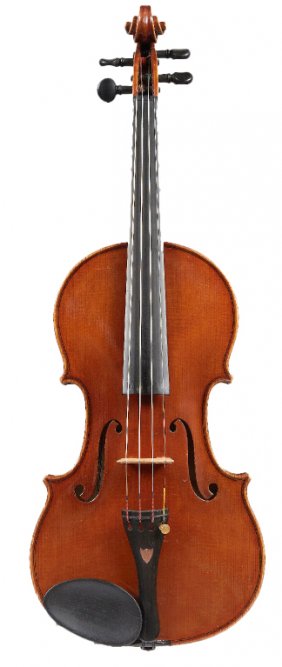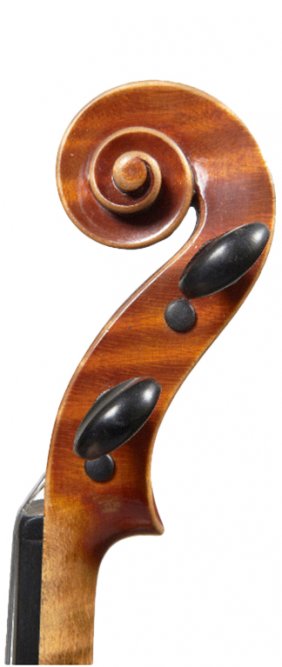Marco Dobretsovitch has the distinction of being the only professional violin maker up until the present time active in Egypt. His background is complex; born in Ulcinj in Montenegro in 1891, he moved to Cairo in 1914, and studied with Augusto Pollastri in Bologna in about 1920. Returning to Egypt, he became established in Cairo, but spent his last years in Alexandria, where he died some time after 1945.
The coastal town of Ulcinj was known since the 16th century, when it belonged to the Venetian Republic, as Dulcigno. Essentially Albanian in culture, it enjoyed short-lived independence from 1878 before being annexed by Montenegro in 1880. What brought Dobretsovich to Cairo is unclear, but Montenegro had by 1912 already suffered two fierce Balkan wars, and in 1914, after the spark of the assassination of Franz Ferdinand in Sarajevo ignited the First World War, he was in distinct danger of military duty. Montenegro aligned with the Allied Powers in the war, but was occupied by the Austro-Hungarian army from 1916. Egypt, at the time of Dobretsovich’s arrival in Cairo, was also aligned with the allies, but had just broken from direct British rule in 1914. The country was in massive debt, incurred by the building of the Suez Canal, and can hardly have been the most immediately attractive environment for a would-be luthier. After the war came to an end, he found his way to Bologna to work with Pollastri, a highly distinguished maker already much appreciated, and a pupil of Raphael Fiorini.



Pollastri’s powerful influence is clear in Dobretsovich’s professional work in Cairo and Alexandria. He was a very good pupil it would seem. His workmanship is remarkable- beautifully controlled and finely finished- and represents the very best of Italian style, superior in many ways to any number of 20th century makers in Italy itself. This example, dated 1934 and made in Alexandria, is very pure and well-preserved, in virtually new condition. Every mark of classical Italian work in its post-Pressenda flowering is present. The model is a finely balanced Stradivarian pattern, with the details of edgework, purfling and soundholes fluently executed. The wood is flawlessly beautiful, the back a striking single piece of deeply flamed maple. The head is the most obvious mark of Pollastri’s teaching, with a distinctive dowel-like eye appearing to run straight through the centre of the volute, similar to the work of Carlo Bergonzi. The varnish is very much in the modern Italian manner: a clear, well-polished and even orange colour with the edges softened and lightened in tone.
The violin bears a full and original label printed in Italian, stating ‘Marco Dobretsovic / Liutaio / fece in Alessandria d’Egitto Anno 1934’, the last two digits of the date added by hand, as is a signature inscribed diagonally across the right hand edge of the label. Another small label adjacent to this bears the number 272. The wording and form of the main label is also found handwritten in pencil on the interior of the front, beneath the treble soundhole.
In these days it is not surprising to find work of distinctively English, German, French or Italian flavour emanating from the furthest corners of the world, largely thanks to the international schools of violin making firmly established in all these places, and more. Dobretsovich was possibly a pioneer in this, but sadly, his work in Egypt did not find a follower or create a tradition of its own.
Principal dimensions:
- Length of back: 350mm
- Width of upper bouts: 165mm
- Width of middle bouts: 108.5mm
- Width of lower bouts: 206mm